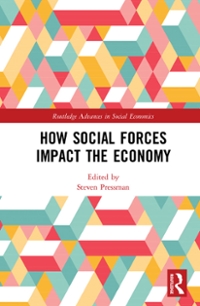Question
Can you reword this to make it not computer generated. This is an IB Internal Assessment for Macroeconomics. Can you follow the right format for
Can you reword this to make it not computer generated. This is an IB Internal Assessment for Macroeconomics. Can you follow the right format for an IA. Heres my article. https://www.cbsnews.com/news/imf-dims-outlook-for-2023-global-economy-ukraine-russia-war/. Also can you tell me if this is a good essay and would get points for the IA for it and then help make it better
The International Monetary Fund (IMF) recently published its outlook for the global economy in 2023, and it highlights several key challenges and risks to the economic recovery. The report was released in January 2023 and comes at a time when the world is grappling with numerous challenges, including the ongoing COVID-19 pandemic, geopolitical tensions, and climate change. In this Internal Assessment, we will analyze the IMF's outlook and its implications for the global economy.
According to the IMF's report, the global economy is expected to grow at a slower pace in 2023 than previously anticipated. The IMF has downgraded its growth projections for the year, citing a number of factors that could undermine economic recovery. These include the ongoing COVID-19 pandemic, supply chain disruptions, rising inflation, and geopolitical risks.
The COVID-19 pandemic continues to be a major concern for the global economy. While the rollout of vaccines has been a positive development, there are still many unknowns surrounding the emergence of new variants of the virus and the effectiveness of existing vaccines against them. This uncertainty has led the IMF to revise its growth projections downward, as the potential for renewed lockdowns, travel restrictions, and other measures to curb the spread of the virus could weigh on economic activity.
Supply chain disruptions have also been a significant challenge for many businesses and industries in the wake of the pandemic. The disruption of global supply chains has resulted in shortages of goods, delays in deliveries, and higher costs for businesses and consumers. This has put a strain on the global economy and could continue to do so in the coming years, as the pandemic continues to disrupt global trade.
Another factor that the IMF identified as a risk to economic growth is rising inflation. Inflation has been on the rise in many countries, driven by a combination of factors such as supply chain disruptions, higher commodity prices, and increased demand as the global economy recovers from the pandemic. Inflation can be a concern for businesses and consumers alike, as it can erode purchasing power and reduce the overall value of money.
Geopolitical risks also pose a significant threat to the global economy. The IMF specifically highlighted the Ukraine-Russia conflict as a key risk that could disrupt trade, investment, and supply chains, and could lead to higher energy prices and inflation. The conflict has escalated in recent months, with Russia annexing the Crimean Peninsula and tensions between the two countries continuing to rise. This has led to concerns about the impact on the wider region and the potential for spillover effects on the global economy.
Climate change is another risk that the IMF identified as a potential disruptor of economic activity. Extreme weather events, such as droughts, floods, and wildfires, can lead to supply chain disruptions and affect agricultural output. This could lead to higher food prices and inflation, which would impact consumer spending and economic growth. In addition, the transition to a low-carbon economy could also pose challenges for certain industries and sectors, as they adapt to new technologies and regulatory frameworks.
In light of these challenges, governments and policymakers will need to take steps to support economic growth and development. This could include measures such as increased investment in infrastructure, research and development, and education and training. Governments could also consider implementing policies to support small and medium-sized enterprises, which are key drivers of economic growth and job creation. Additionally, policymakers will need to be mindful of the risks posed by geopolitical tensions and climate change. This could include measures such as diversifying supply chains, investing in renewable energy, and promoting sustainable agriculture and land use practices.
To mitigate the risks of geopolitical tensions, governments could pursue diplomatic efforts to reduce tensions and promote stability in the regions affected by conflicts. They could also work to build more resilient supply chains, which could help reduce Finish what you were going to say disruptions and vulnerabilities to economic shocks.
In summary, the IMF's outlook for the global economy in 2023 highlights a number of challenges and risks that could undermine economic recovery. While the COVID-19 pandemic, supply chain disruptions, rising inflation, geopolitical tensions, and climate change all pose significant threats, there are steps that governments and policymakers can take to support economic growth and development. By investing in infrastructure, promoting small and medium-sized enterprises, and taking measures to address geopolitical risks and climate change, policymakers can help ensure a more resilient and sustainable global economy in the years to come.
Step by Step Solution
There are 3 Steps involved in it
Step: 1

Get Instant Access to Expert-Tailored Solutions
See step-by-step solutions with expert insights and AI powered tools for academic success
Step: 2

Step: 3

Ace Your Homework with AI
Get the answers you need in no time with our AI-driven, step-by-step assistance
Get Started


